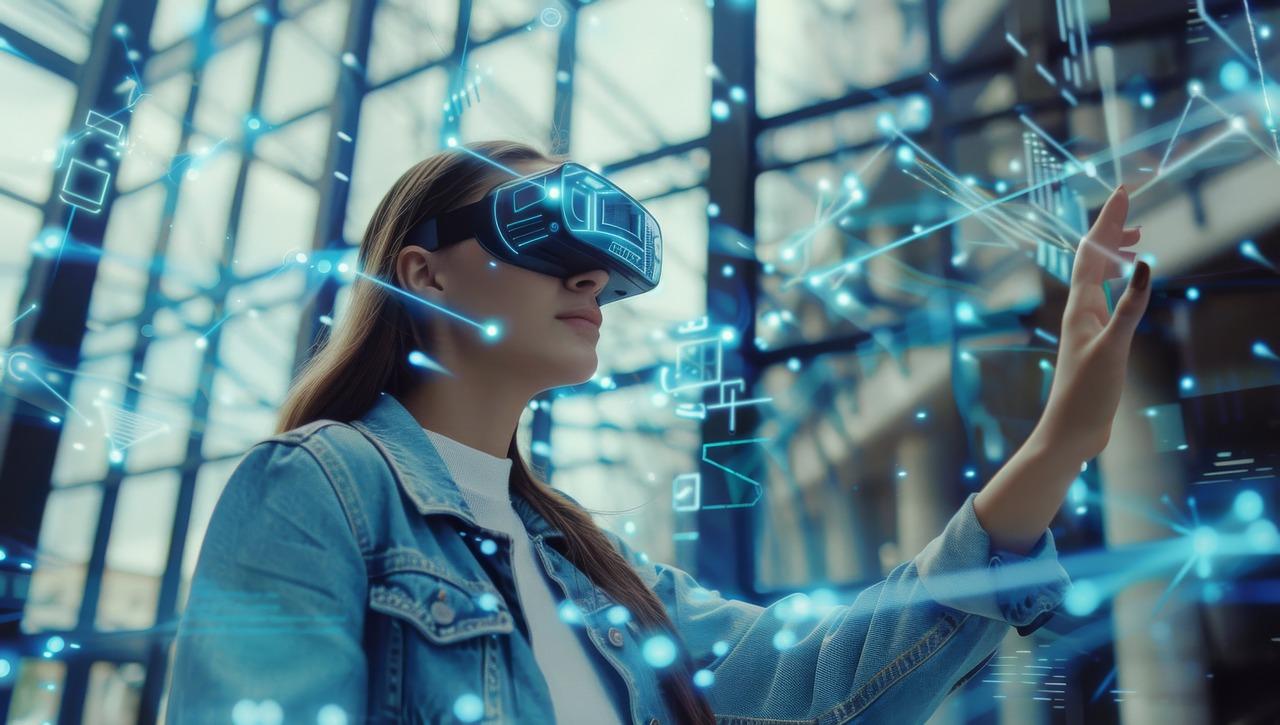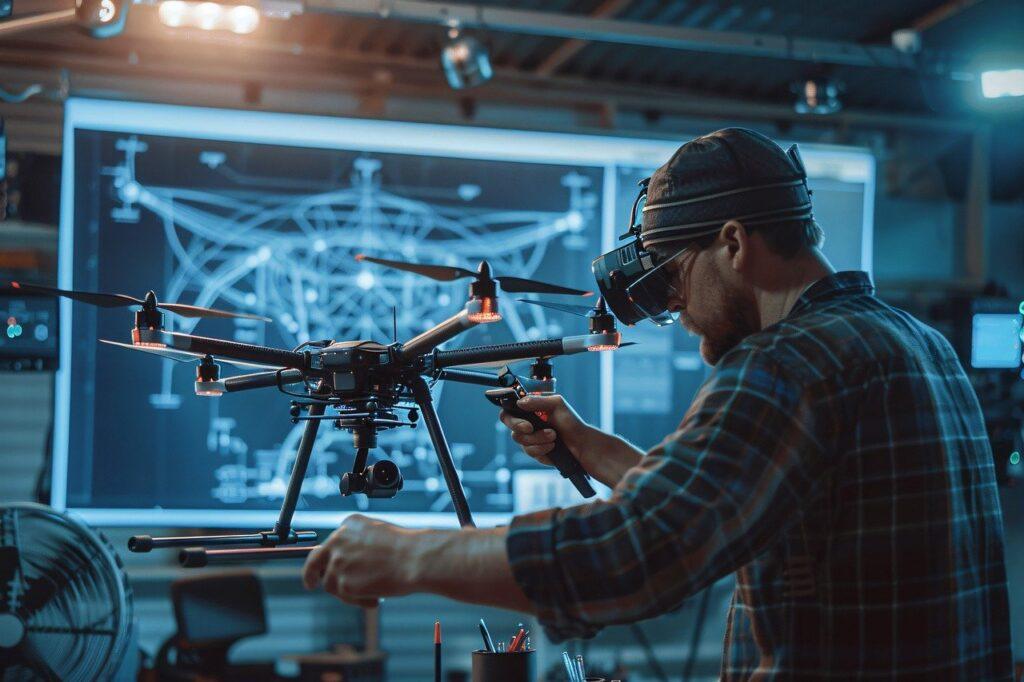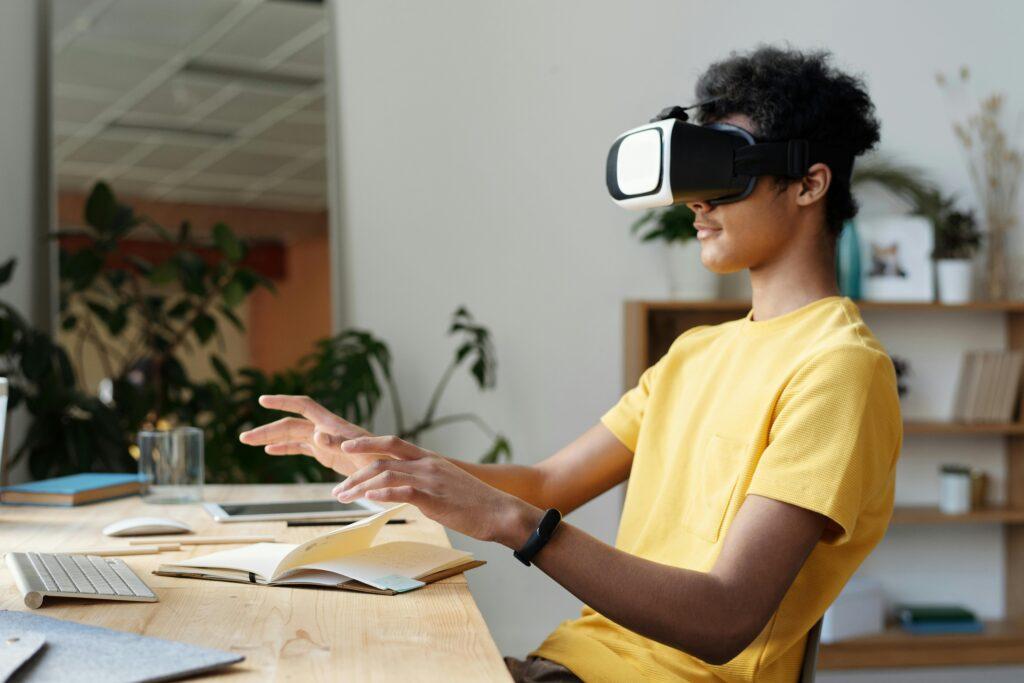“How Augmented Reality Will Transform Your Child’s Education Forever!” https://anshulbohre.com/

In the ever-evolving landscape of education, technology continues to play a pivotal role in transforming how we teach and learn. Among the latest innovations, Augmented Reality (AR) stands out as a game changer. By blending the physical and digital worlds, AR offers immersive and interactive learning experiences that were once unimaginable. This blog post explores the potential of AR in education, its benefits, and how it is poised to revolutionize the future of learning.
1. What is Augmented Reality (AR)?
Definition: Augmented Reality (AR) is a technology that overlays digital information—such as images, videos, and sounds—onto the real world, enhancing the user’s perception and interaction with their environment.
How It Works: AR typically requires a device with a camera and a screen, such as a smartphone, tablet, or AR glasses. The device captures the real-world environment and then superimposes digital elements onto it, creating a blended experience.
Examples:
- AR apps like Pokémon GO, which overlay digital creatures onto real-world settings.
- AR features in social media platforms like Instagram and Snapchat, where users can add digital filters and effects to their photos and videos.
2. Benefits of AR in Education:
Enhanced Engagement: AR makes learning more engaging and fun by providing interactive and immersive experiences. Students are more likely to stay focused and retain information when they can interact with digital elements in real time.
Improved Understanding: Complex concepts can be visualized and manipulated in 3D, making them easier to understand. For instance, AR can bring abstract subjects like anatomy, chemistry, and physics to life by allowing students to explore 3D models and simulations.
Personalized Learning: AR can be tailored to individual learning styles and paces. Educators can create customized AR experiences that cater to the unique needs and preferences of each student, enhancing personalized learning.

Collaboration and Social Learning: AR fosters collaboration by enabling students to work together on interactive projects and activities. It also supports social learning by encouraging students to share their AR experiences and insights with peers.
Accessibility: AR can make education more accessible to students with disabilities. For example, AR applications can provide visual and auditory cues to assist students with hearing or visual impairments.
3. Real-World Applications of AR in Education:
Science and Biology: AR can transform science education by allowing students to explore and interact with 3D models of biological structures, such as the human body, cells, and molecules. Apps like Froggipedia enable students to dissect a virtual frog, providing a hands-on learning experience without harming real animals.
History and Geography: AR can bring historical events and geographic locations to life. Students can use AR apps to explore ancient civilizations, historical landmarks, and geographical features, gaining a deeper understanding of history and geography.
Mathematics: AR can make abstract mathematical concepts more tangible. For example, students can use AR apps to visualize geometric shapes, algebraic equations, and mathematical functions in 3D, enhancing their comprehension of math concepts.
Language Learning: AR can facilitate language learning by providing immersive experiences that simulate real-life conversations and interactions. Language learners can use AR apps to practice vocabulary, grammar, and pronunciation in context, improving their language skills.
Vocational Training: AR can enhance vocational training by providing realistic simulations of real-world tasks and procedures. For example, medical students can use AR to practice surgical techniques, while engineering students can use AR to explore and manipulate 3D models of machinery and structures.

4. Challenges and Considerations:
Cost and Accessibility: While AR technology has become more affordable, it still requires investment in devices and software. Ensuring that all students have access to AR tools and resources is a challenge that needs to be addressed.
Technical Issues: AR applications require reliable internet connections and up-to-date devices. Technical issues such as software glitches, hardware limitations, and connectivity problems can hinder the seamless integration of AR in education.
Teacher Training: Educators need to be trained to effectively use AR technology in the classroom. Providing professional development and support for teachers is crucial to ensure the successful implementation of AR in education.
Content Quality: The quality of AR content can vary significantly. It is important to ensure that AR applications are accurate, educational, and aligned with curriculum standards.

5. The Future of AR in Education:
Continued Innovation: As AR technology continues to advance, we can expect even more sophisticated and immersive educational applications. Innovations such as AR glasses and haptic feedback will further enhance the learning experience.
Integration with Other Technologies: AR will increasingly be integrated with other emerging technologies, such as Virtual Reality (VR), Artificial Intelligence (AI), and the Internet of Things (IoT), creating new possibilities for interactive and personalized learning.
Wider Adoption: As AR becomes more affordable and accessible, it will likely see wider adoption across educational institutions. Schools, colleges, and universities will incorporate AR into their curricula to enhance teaching and learning outcomes.
Empowering Lifelong Learning: AR has the potential to support lifelong learning by providing on-demand access to educational content and experiences. Professionals and adult learners can use AR to acquire new skills and knowledge, staying relevant in a rapidly changing world.

Conclusion:
Augmented Reality (AR) is a game changer in education, offering immersive, interactive, and personalized learning experiences that can transform how we teach and learn. While there are challenges to overcome, the potential benefits of AR in education are immense. As technology continues to evolve, AR will play an increasingly important role in shaping the future of learning, empowering students and educators alike to explore new frontiers of knowledge and creativity.






